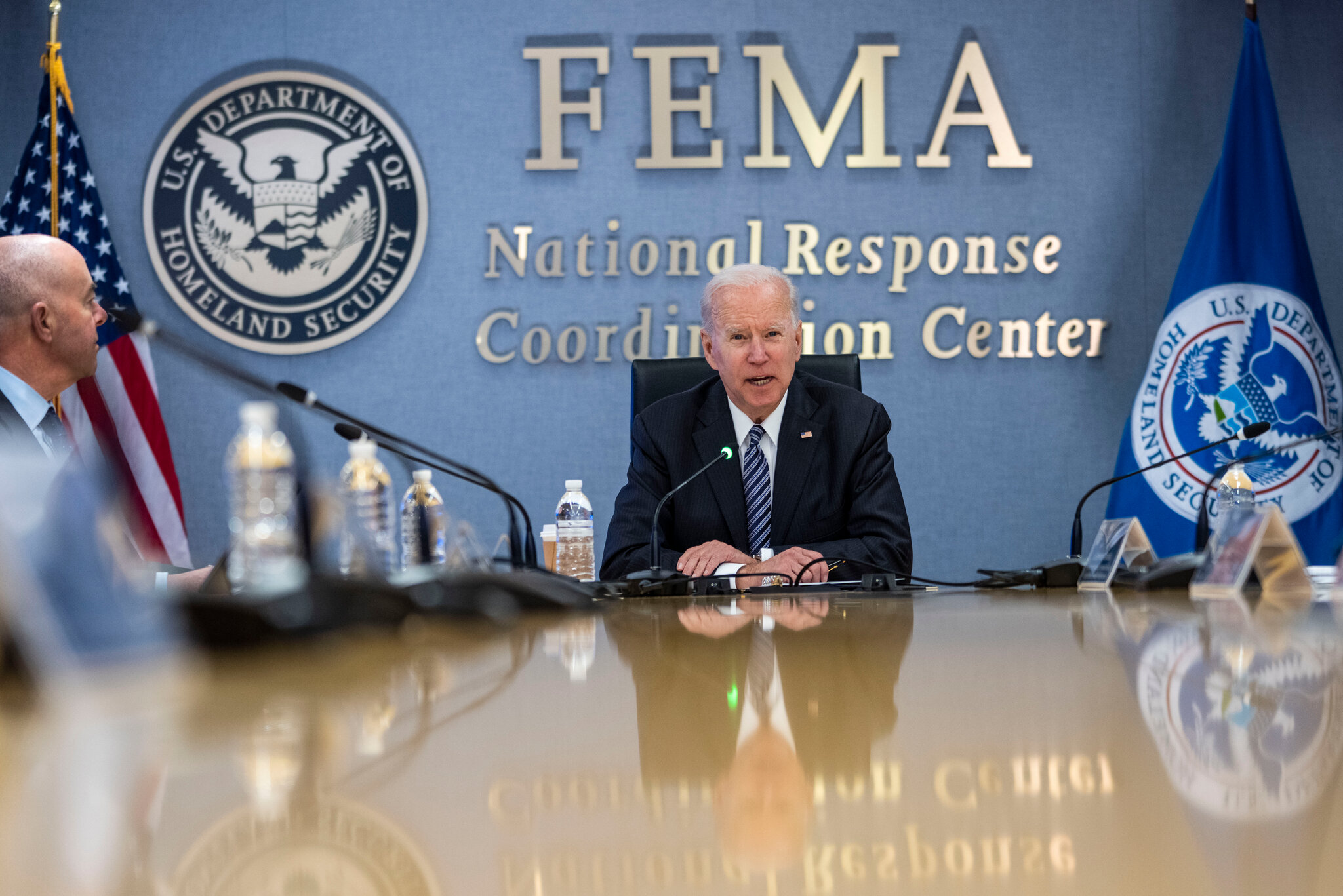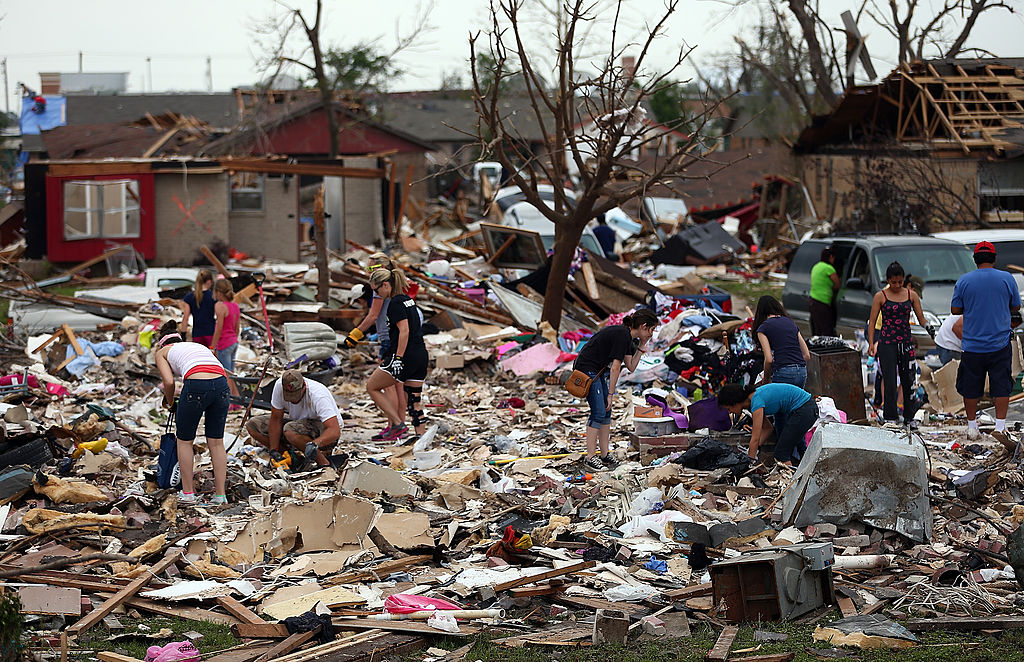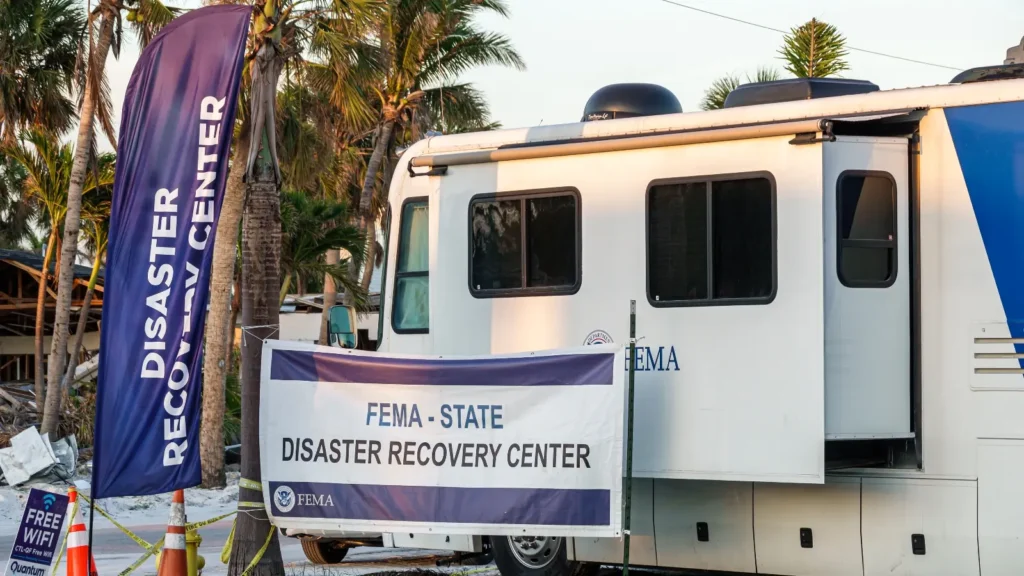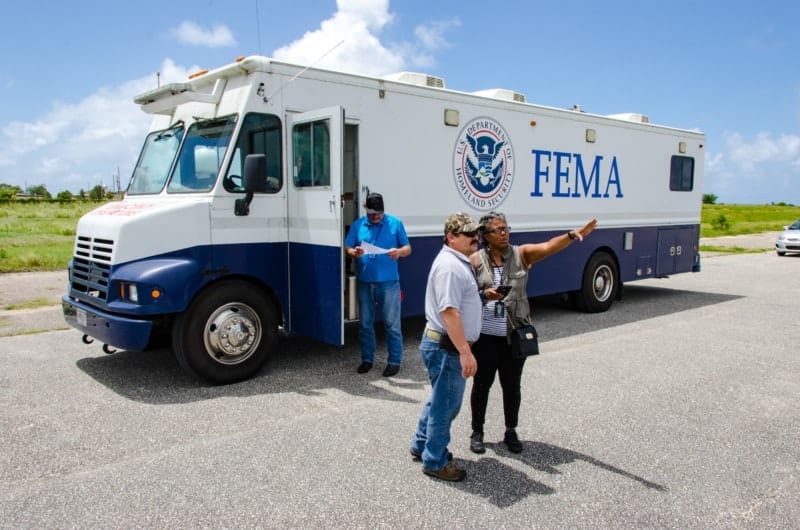When disaster strikes, life can change in the blink of an eye. One moment everything feels normal—your home, your family, your routine—and the next, a storm, fire, or flood or Disasters can turn it all upside down. In those heartbreaking moments, when people are left wondering “What now?”, there’s one name that often brings a sense of relief and hope: FEMA.
The Federal Emergency Management Agency isn’t just a government office with a long name. It’s the helping hand that shows up when families lose everything. It’s the folks who bring water, food, and shelter when communities feel broken. And most importantly, it’s a reminder that no one has to face disaster alone.

What is FEMA?
When disaster strikes—whether it’s a hurricane tearing through coastlines, wildfires spreading across forests, or floods sweeping into towns—people often wonder, “Who shows up first to help when things feel out of control?” That’s where FEMA comes in.
The Federal Emergency Management Agency (FEMA) is the U.S. government’s disaster-response backbone. It was created in 1979 with one clear mission: to support communities before, during, and after disasters. Think of FEMA as a safety net—when state and local resources are stretched too thin, FEMA steps in with the tools, funds, and expertise needed to get life back on track.
From setting up emergency shelters and sending medical teams, to providing financial aid for rebuilding homes and businesses, FEMA works behind the scenes to help people recover. It’s not just about responding after tragedy hits; FEMA also spends a lot of time preparing communities, educating citizens, and training first responders so that the impact of disasters can be reduced in the first place.
In short, FEMA is more than just a federal agency—it’s America’s helping hand in the darkest of times.

Why is FEMA Important?
When disaster strikes, it doesn’t just destroy buildings—it shakes lives. Families lose homes, children lose schools, and entire communities can feel lost overnight. In those moments, what people need most is someone who shows up, ready to help. That’s where FEMA becomes so important.
FEMA is like a helping hand from the nation itself. When local resources are stretched thin, FEMA steps in with food, clean water, medical help, and safe shelters. For a family that just lost everything, that first warm meal or a roof over their head isn’t just aid—it’s comfort, it’s hope.
But FEMA’s importance goes beyond immediate rescue. It helps rebuild lives—supporting families to repair homes, helping towns recover schools and hospitals, and giving businesses the chance to open their doors again. It’s not just about cleaning up after chaos; it’s about making sure people can dream of a normal life again.
And here’s something many don’t realize—FEMA also works before disasters ever happen. From flood prevention projects to community training programs, it quietly prepares us for the storms ahead.
At its core, FEMA matters because it reminds us that in the face of nature’s worst, we don’t stand alone. The agency is proof that recovery is possible, no matter how overwhelming the damage may feel.
How FEMA Works (Step-by-Step Process)
When disaster hits—whether it’s a raging hurricane, an earthquake, or wildfires tearing through towns—help doesn’t just appear instantly. There’s a process, and FEMA plays a key role in making sure that process brings relief to people who need it most. Here’s how it usually unfolds, step by step:
1. Local and State Response Comes First
Every disaster starts at the local level. Firefighters, police, and community volunteers are often the very first to respond. State governments also step in with their resources. But when the damage is too big to handle, that’s when FEMA gets the call.
2. FEMA Steps In After a Disaster Declaration
Once a governor requests federal assistance, the President can issue a disaster declaration. That’s the green light for FEMA to move in with full support. Think of it as a partnership—local and state agencies handle what they can, and FEMA fills in the gaps.
3. Immediate Relief Operations
FEMA’s first priority is saving lives and easing suffering. Emergency shelters are set up, medical teams are deployed, and essential supplies like food, water, and blankets are delivered. For families who’ve lost everything, this first wave of help is often the most critical.
4. Assessing the Damage
While relief is ongoing, FEMA teams are on the ground assessing the full scale of damage—homes destroyed, infrastructure broken, businesses shut down. This helps them figure out the exact kind of aid communities will need to recover.
5. Financial and Recovery Assistance
Once the assessment is done, FEMA provides financial help to families who qualify—money for temporary housing, home repairs, or even replacing essential belongings. They also support rebuilding efforts for schools, hospitals, and public services so communities can start getting back to normal.
6. Long-Term Rebuilding and Preparedness
FEMA doesn’t just pack up and leave after the first few weeks. The agency stays involved for the long haul—helping with rebuilding projects, disaster loans, and programs that make communities stronger for the future. In many ways, FEMA prepares people not just to recover, but to stand stronger if disaster strikes again.
Major Achievements of FEMA
When we talk about FEMA’s achievements, it’s not just about numbers, funds, or policies—it’s about people. Every disaster FEMA has responded to carries stories of families holding on to hope, communities finding strength, and strangers becoming lifelines for each other.
Take Hurricane Katrina in 2005, for example. Entire neighborhoods were underwater, and families were stranded on rooftops with nothing but the clothes on their backs. FEMA coordinated rescue operations, provided shelters, and helped people begin the long journey of rebuilding. For many, that first meal in a shelter or a safe bed after days of uncertainty wasn’t just aid—it was dignity restored.
After 9/11, when the nation was grieving and New York City felt broken, FEMA worked alongside first responders to bring stability. It wasn’t just about logistics; it was about helping people feel like they weren’t alone in the face of something unimaginable.

Fast forward to the COVID-19 pandemic—a disaster unlike any hurricane or fire. FEMA stepped up by distributing protective gear, setting up temporary hospitals, and making sure communities had resources to fight a crisis no one saw coming.
But FEMA’s story isn’t only about massive, headline-making events. It’s also about the smaller victories—the family in a small flood-hit town who could move back into their repaired home, the farmers who got relief after a devastating drought, or the children who returned to a rebuilt school after a tornado.FEMA’s greatest achievement is simple: showing up when people need it most. In those moments when everything feels broken, FEMA’s presence says, “You’re not alone. We’ll get through this together.”
Challenges FEMA Faces
As powerful and essential as FEMA is, the agency isn’t without its struggles. Disasters, after all, don’t come with a warning label or a perfect playbook. And when lives are at stake, even the smallest delay or shortfall can feel enormous.
One of FEMA’s biggest challenges is scale. Some disasters are so massive—like Hurricane Katrina or wildfires sweeping across multiple states—that even with thousands of workers and tons of resources, the agency can be stretched thin. It’s like trying to put out ten fires with just one hose.
Another hurdle is funding. FEMA has a budget, but when disasters keep striking back-to-back, those funds can drain quickly. This sometimes leaves the agency scrambling to balance immediate relief with long-term rebuilding.
There’s also the challenge of coordination. FEMA doesn’t work alone—it partners with state and local governments, first responders, and sometimes even the military. Getting all these moving parts to work in sync during chaos is no small feat. Miscommunication or delays can create frustration for people waiting for help.
And then, there’s public perception. In times of crisis, emotions run high. If aid doesn’t arrive fast enough, FEMA can face criticism—even when the obstacles are beyond its control. Rebuilding trust after criticism can be just as difficult as rebuilding homes after a storm.
Finally, FEMA faces a growing challenge that no one can ignore: climate change. With hurricanes getting stronger, wildfires spreading faster, and floods becoming more frequent, the demand for FEMA’s help is only rising. The question isn’t if FEMA will be needed, but how often—and how prepared it will be to handle the next wave of crises.
At the end of the day, FEMA is made up of people trying to help other people. The challenges are real, but so is the determination to overcome them.
FEMA in Our Daily Lives
When most people hear about FEMA, they picture big disasters—hurricanes ripping through coastlines, floods swallowing towns, or wildfires burning across states. But what many don’t realize is that FEMA touches our lives in quieter, everyday ways too, often without us even noticing.
For example, if you’ve ever heard about flood insurance programs, chances are FEMA had a hand in making those possible. That insurance means a family can rebuild their home after heavy rains instead of losing everything. FEMA also funds community preparedness programs—things like evacuation drills in schools or awareness campaigns that teach kids what to do during an earthquake. Those lessons can one day save lives.
Even something as simple as antacid commercials mentioning “acidic reactions” in disasters or local emergency alerts on your phone often tie back to FEMA’s guidelines and systems working behind the scenes. And when your town upgrades drainage systems, builds safer shelters, or receives federal support for emergency training—that’s FEMA investing in your safety long before any storm clouds gather.

So while FEMA might feel like an agency that only shows up when everything is falling apart, it’s actually a quiet partner in our daily lives. It’s there in the background, making sure that if disaster does strike, we’re not starting from zero. In a way, FEMA is like insurance for the nation—reassuring us that someone’s always preparing, planning, and standing by our side.
FAQs About FEMA
Q1. What does FEMA stand for?
FEMA stands for the Federal Emergency Management Agency. It is a U.S. government agency that helps people prepare for, respond to, and recover from disasters.
Q2. How does FEMA help after a disaster?
FEMA provides emergency shelters, food, water, and medical support right after a disaster. Later, it also helps families with financial aid for temporary housing, home repairs, and rebuilding communities.
Q3. Can individuals apply for FEMA assistance?
Yes. If you’ve been affected by a federally declared disaster, you can apply for assistance directly on FEMA’s official website or through their helpline. The aid can include housing help, grants for repairs, or funds to replace essential belongings.
Q4. Does FEMA only work during big disasters?
Not at all. FEMA also plays a role in daily preparedness—from funding flood insurance programs to training communities for emergency situations. It’s not just about responding after a crisis but also reducing risks before they happen.
Q5. Why is FEMA so important for America?
Because disasters don’t just destroy buildings—they impact lives. FEMA steps in when local and state resources aren’t enough, ensuring that people have the support, safety, and hope they need to recover.Q6. How is FEMA preparing for the future?
With climate change making disasters more frequent and intense, FEMA is focusing on technology, early warning systems, and stronger community preparedness to face future challenges.
“If you’re interested in exploring the political landscape further, don’t miss my in-depth piece on Trump vs. JB Pritzker: Who Holds the Political Edge?, where I break down their strengths, challenges, and future outlook.”
Pingback: Shocking – Breaking: Shocking Delta Airlines Flight Cancellations Leave Passengers Stranded - statesgazette
Pingback: Jerry Nadler in Congress: The Powerful Truth Behind His Influence - statesgazette